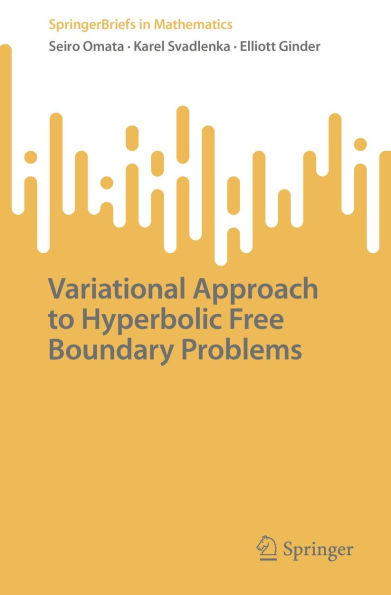This volume is devoted to the study of hyperbolic free boundary problems possessing variational structure. Such problems can be used to model, among others, oscillatory motion of a droplet on a surface or bouncing of an elastic body against a rigid obstacle. In the case of the droplet, for example, the membrane surrounding the fluid in general forms a positive contact angle with the obstacle, and therefore the second derivative is only a measure at the contact free boundary set. We will show how to derive the mathematical problem for a few physical systems starting from the action functional, discuss the mathematical theory, and introduce methods for its numerical solution. The mathematical theory and numerical methods depart from the classical approaches in that they are based on semi-discretization in time, which facilitates the application of the modern theory of calculus of variations.
1142044300
Variational Approach to Hyperbolic Free Boundary Problems
This volume is devoted to the study of hyperbolic free boundary problems possessing variational structure. Such problems can be used to model, among others, oscillatory motion of a droplet on a surface or bouncing of an elastic body against a rigid obstacle. In the case of the droplet, for example, the membrane surrounding the fluid in general forms a positive contact angle with the obstacle, and therefore the second derivative is only a measure at the contact free boundary set. We will show how to derive the mathematical problem for a few physical systems starting from the action functional, discuss the mathematical theory, and introduce methods for its numerical solution. The mathematical theory and numerical methods depart from the classical approaches in that they are based on semi-discretization in time, which facilitates the application of the modern theory of calculus of variations.
54.99
In Stock
5
1

Variational Approach to Hyperbolic Free Boundary Problems

Variational Approach to Hyperbolic Free Boundary Problems
eBook (1st ed. 2022)
$54.99
Related collections and offers
54.99
In Stock

Product Details
| ISBN-13: | 9789811967313 |
|---|---|
| Publisher: | Springer-Verlag New York, LLC |
| Publication date: | 11/28/2022 |
| Series: | SpringerBriefs in Mathematics |
| Sold by: | Barnes & Noble |
| Format: | eBook |
| File size: | 9 MB |
About the Author
From the B&N Reads Blog
